
Having the right tools when mountaineering can be the difference between life and death. I’ve put together the following guide to act as a checklist for your next mountaineering adventure.
So, what tools do you need for mountaineering? To go mountaineering, you’ll need the following:
- Ice Axe
- Crampons
- Mountaineering Boots
- A Harness
- Rope
- A Helmet
- Protection
- Proper Clothing
- Headlamp
- Food and Water
- Emergency Beacon
- A pack to carry everything
To go mountaineering, you need a variety of technical equipment that will help you remain safe and comfortable on the trip. While the above list encompasses your essential gear — gear that you will take with you every time you head out for a trip — there are other pieces that you may elect to either bring or leave home, depending on your specific objective. This includes tents, belay devices, and crevasse rescue gear, among others. Read on to find out everything you need to know about your mountaineering tools!
Mountaineering Gear List

The above picture has a complete list of everything that you need to go mountaineering. As you can see, it’s broken down into two different categories:
- Essential gear is the stuff that you should bring with you every time you go mountaineering. These tools help you stay safe when you’re in harsh environments, and you should never go on an alpine climb without them.
- Optional/objective-specific gear is stuff that you don’t need every time you go mountaineering, but you will need on some routes. For example, skis wouldn’t serve you well on every trip, but for some peaks, they’re going to be essential.
In the rest of the article, I break down each category of this list, so you know what to look for in your mountaineering gear. I also offer my specific recommendations about the best gear out there, based on my own personal experience (when relevant).
Essential Gear
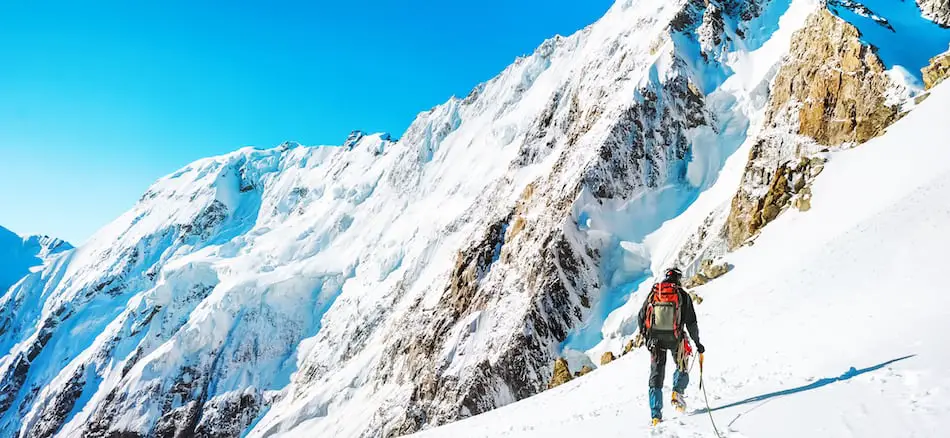
Like I said, essential gear is the stuff you want with you every time you go mountaineering. Make sure to read up on what you’re buying and get the piece of gear that’s best for you!
Ice Axe
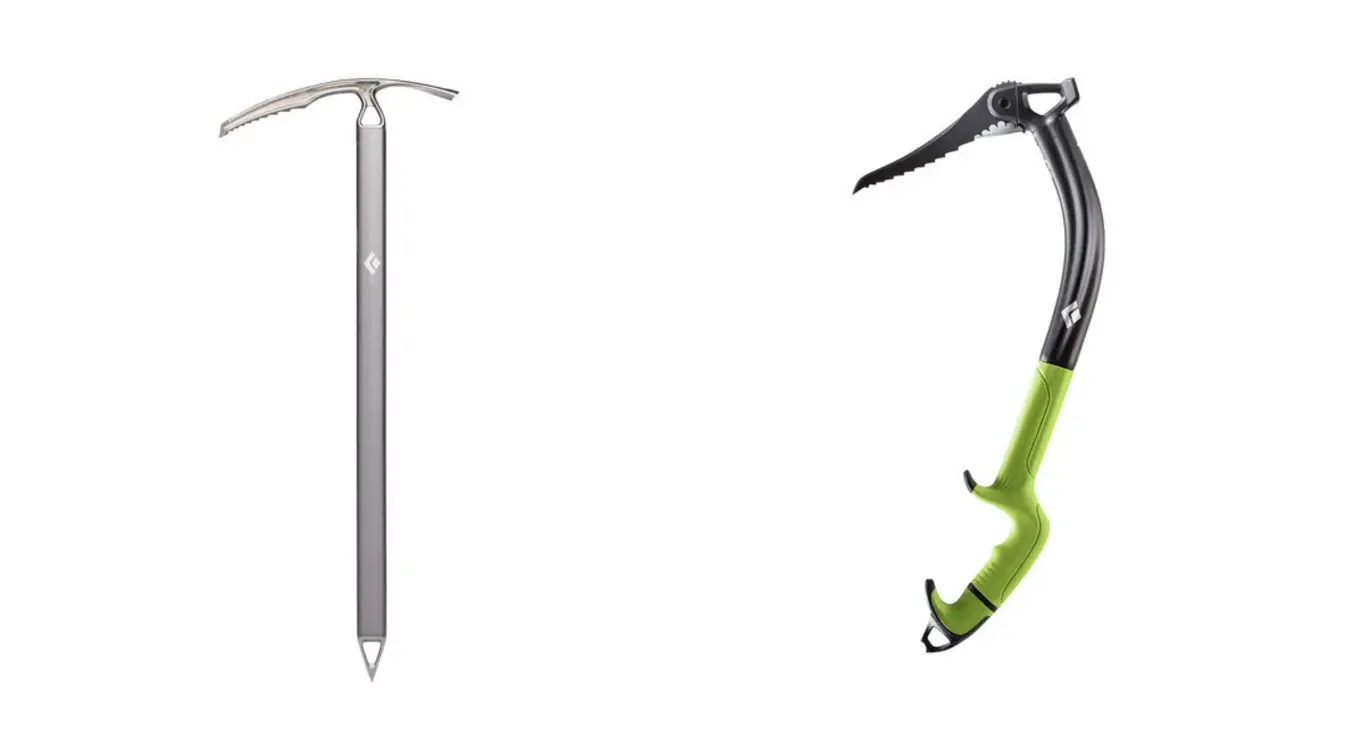
What it is: An axe that allows you to swing into ice, or stab into snow, to use as a handhold
Why you need it: It allows you to ascend steep, slippery surfaces, and to gain purchase on ice or snow.
An ice axe is a tool that’s used to gain purchase on steep, slippery surfaces (namely, ice). As you can see, it’s got a head with a sharp pick on one end, that’s designed to puncture into icy surfaces and allow you to pull on it to move yourself up.
As you can see from the photo above, ice axes come in lots of different shapes. The one on the left is a mountaineering ice axe: it’s taller and straighter, which means it can function sort of like a cane or a hiking pole (with the spike on the bottom allowing you to drive it into deep snow for purchase). However, it performs worse on vertical ice.
The one on the right is an ice climbing axe. It’s shorter and can’t be used as a walking stick, but it’s better for steep sections, as you can swing it with more force and therefore gain more purchase on the ice.
The ice axe you bring depends on your objective. If you know that you’re going to be crossing flatter terrain, with lots of glaciers and snow slopes, I would go with a mountaineering axe. If you’re going to be doing hard climbing, I would say bring an ice climbing axe.
The Petzl Summit Evo is designed to act as a hybrid between these two types of axes.
Crampons
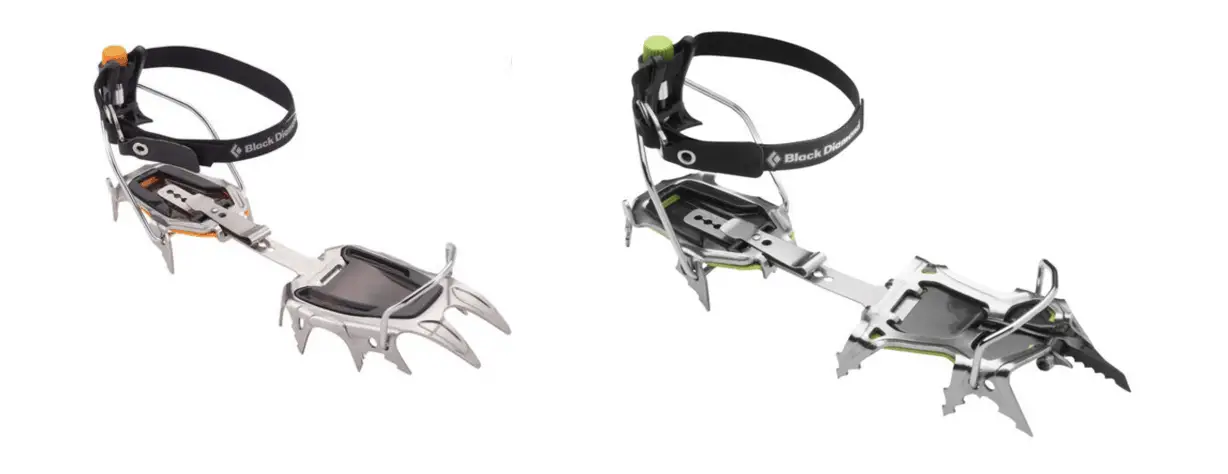
What they are: Attachments for your boot that help you walk on snow and ice.
Why you need them: Mountaineering is almost impossible if you can’t gain traction on slippery surfaces.
Crampons are spikes that attach to your feet so that you can walk easily on snow and ice. Just like the axe, they allow you to gain purchase on slippery, otherwise impassable surfaces.
One again, there are differences between mountaineering crampons and ice climbing crampons, namely in the front points. As you can see in the photo above, mountaineering crampons (left) have down-turned points, designed for walking flat-footed. Ice climbing crampons have sharper, more pronounced front points that are designed for kicking toe-first into ice.
Hybrid crampons, like the Petzl Lynx, are probably your best bet if you want one pair of crampons that will serve you for every type of objective.
Mountaineering Boots
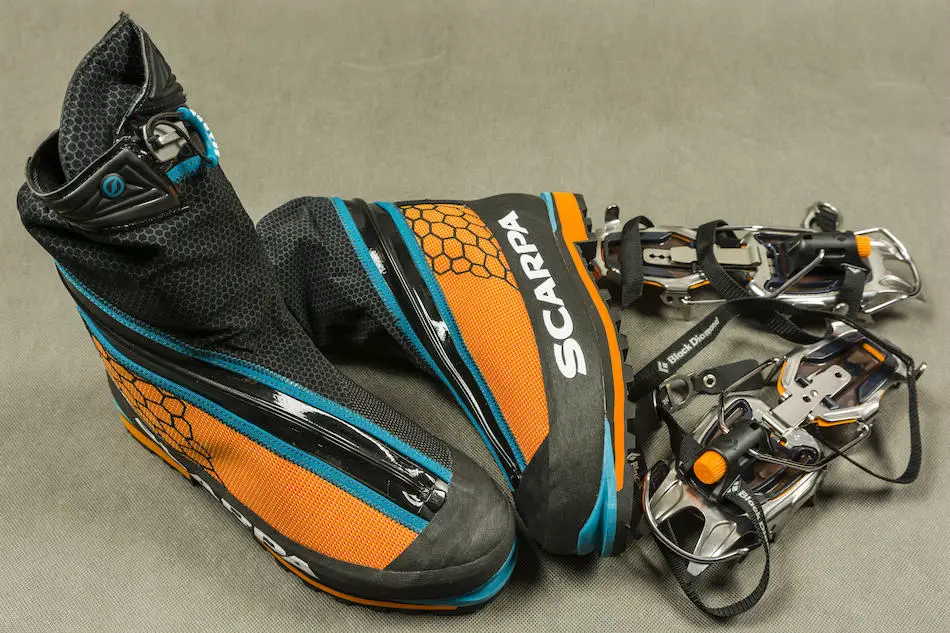
What they are: Stiff, high-ankled boots designed specifically for this purpose
Why you need them: Warmth, support, and compatibility with your crampons
Mountaineering boots are basically the roided-up cousin of hiking boots. With a higher ankle, a stiffer sole, and more padding, these boots are designed for technical work in harsh, cold environments.
The extra insulation of the mountaineering boot keeps your feet warm in snowy conditions. The stiff sole provides support for ice climbing, scrambling, or glacier travel, and the design of the boot makes them compatible with crampons.
These boots can be uncomfortable and weird to walk in for the first little bit, but they’re absolutely essential for mountaineering.
Each person is going to have a different boot preference, so I won’t recommend a specific one here. I will say, though, that a pair of double boots can be great for keeping your feet warm in the winter months.
Harness
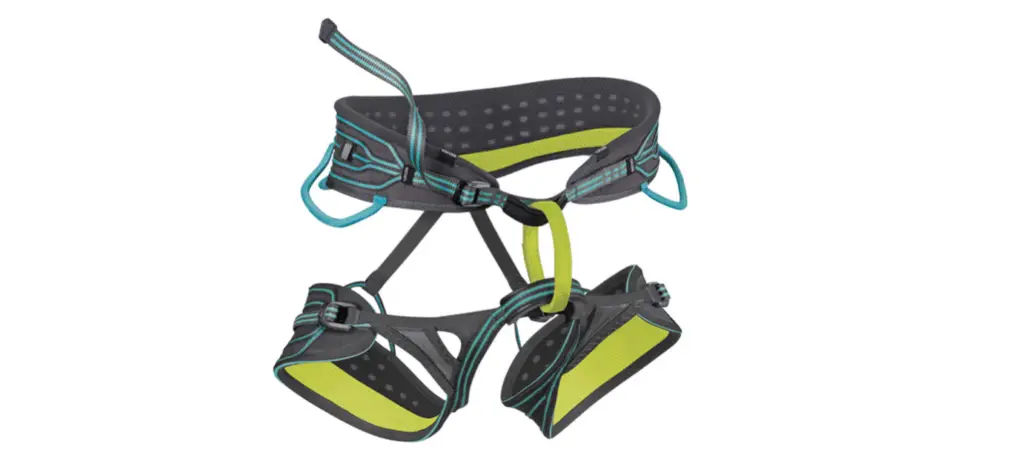
What it is: A combination of waist and leg belts that secures you to a rope.
Why you need it: Harnesses allow you and you partner to belay or otherwise secure each other in technical sections.
A harness is what allows you to secure yourself and your partner to a rope for belaying, glacier travel, or emergency rescue. Because of this, I would recommend always wearing your harness when you’re going mountaineering, as it saves you the trouble of having to put it on or take it off mid-route.
Any old rock-climbing harness will do, but I would say that comfort is key when looking for a mountaineering one. You’re going to be wearing this thing for tens of hours on end, so you don’t want it chaffing you as you walk.
For mountaineering, the Blue Ice Addax harness is the lightest, most comfortable option around.
Rope
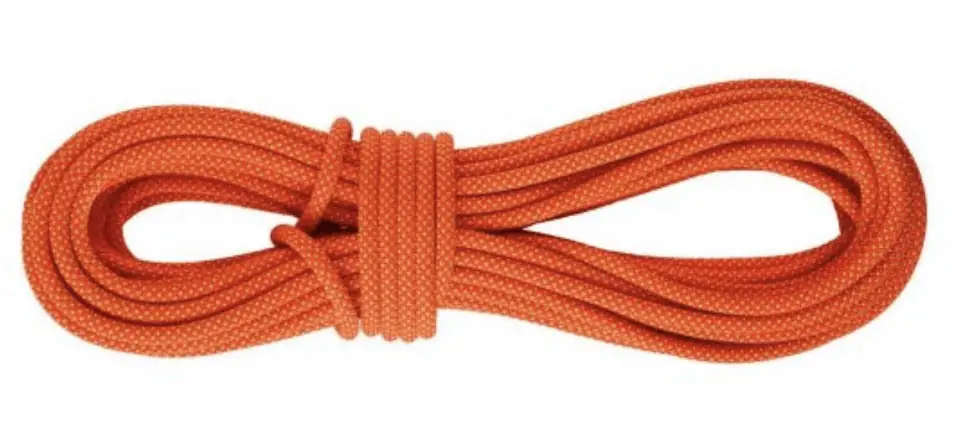
What it is: A specially designed rope that can catch falls or help with belays
Why you need it: A rope is what will save your life if you or your partner fall while climbing.
Having a technical alpine rope with you is perhaps the most important piece of safety equipment to bring. A rope is the difference between an enjoyable day in the mountains and a stress-filled dance with death.
As with many things on this list, there are two types of ropes:
- Dynamic ropes are designed to stretch when weighted. These are good for climbing on in areas where you risk falling.
- Static ropes do not stretch. They’re traditionally used more for abseiling or glacier travel
For general mountaineering, I would recommend using a dynamic rope, because it can also perform the functions of a static rope (whereas a static rope can’t perform the functions of a dynamic rope). Specifically, the Mammut Alpine Sender, either in the 8.7mm or 7.5 mm widths (only if you plan to use it as a double rope) are great options.
Helmet

What it is: You know what a helmet is. It stops stuff from hitting your head
Why you need it: Alpine helmets are specifically designed to stop top-down impacts caused by falling rock or ice. They can be the difference between a minor injury or a life-changing incident.
I cannot stress enough how important it is that you bring a proper alpine helmet with you and wear it all the time. From the moment you reach the base of your route to when you’re back at the car, you should have your helmet on.
Alpine helmets serve two purposes:
- They protect you is you fall and swing into the rock
- They protect you from anything landing on your head, like a chunk of ice
Alpine helmets are specifically designed for this purpose. Wearing a bike helmet, hockey helmet, or any other type of substitute won’t do.
The Petzl Sirroco is a great lightweight-yet protective helmet.
Protection
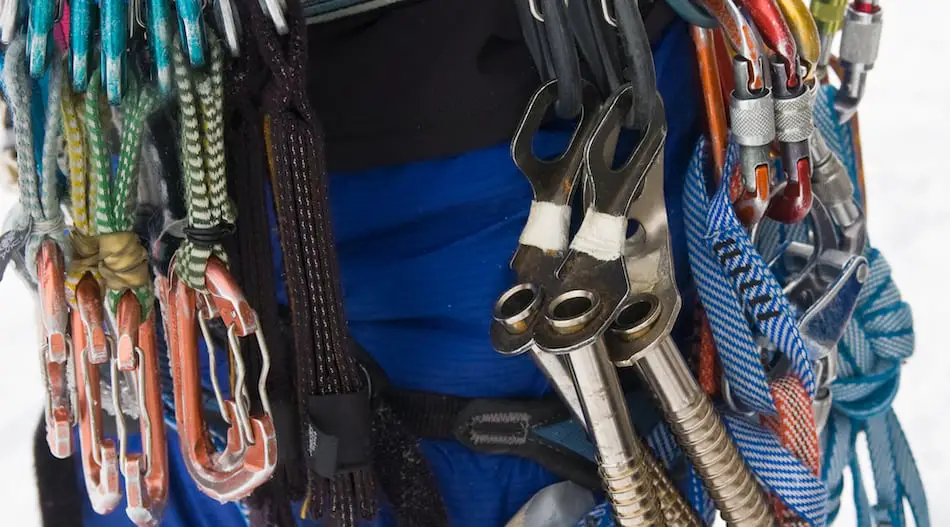
What it is: Gear that allows you to secure yourself to the mountain.
Why you need it: Without protection, your rope is just a string tying you to your partner. Protection is what allows the rope the catch you if you fall.
There are several different types of protection out there, and which one you need to bring varies based on what type of terrain you’ll be on. You won’t need every type of protection for every route, but you’ll likely need at least some of it.
Ice Screws
These are long, hollow tubes that you screw into ice to catch you when you fall. Ice screws are necessary if you know you’ll have to climb on vertical ice.
Rock Protection
This consists of cams, nuts, and pitons that you place into cracks in the rock. You should bring these if you know you have exposed, challenging sections of rock to climb.
Snow protection
Snow protection covers a wide variety of tools used for building anchors on less-than-vertical slopes. They’re probably the most common form of mountaineering protection.
Slings/Runners/Carabiners
Slings and runners are knotted pieces of webbing that are used to attach yourself to the pieces of protection that you build. Carabiners also help for this purpose, and can also do a host of other jobs. I would suggest always carrying an assortment of slings and runners with you when you go mountaineering.
Proper Clothing
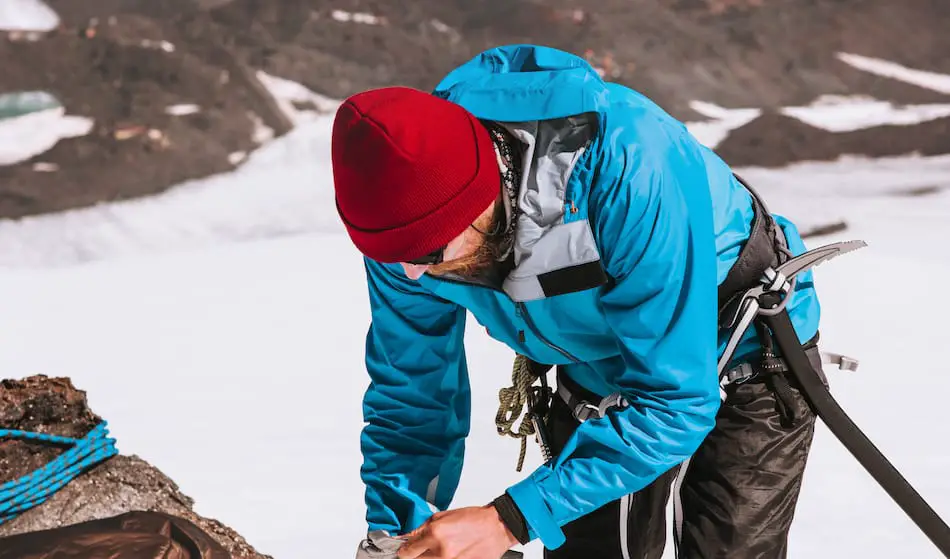
What it is: Base, mid, and insulation layers that keep you warm but not sweaty when moving
Why you need it: Mountaineering often occurs in extreme environments, and you need the proper clothing to keep you safe from the elements
Having the right clothing is essential when mountaineering. You want to make sure that you’re warm enough to be safe, but no so warm that you start sweating when moving. The key to this is layering: bringing clothes that you put on when you’re warm and take off when you’re cold.
There are entire guides written on layering for mountaineering, so I won’t go too far into it here. Mountain Hardwear, Patagonia, and Arc’teryx all make clothing designed for mountaineering.
Headlamp
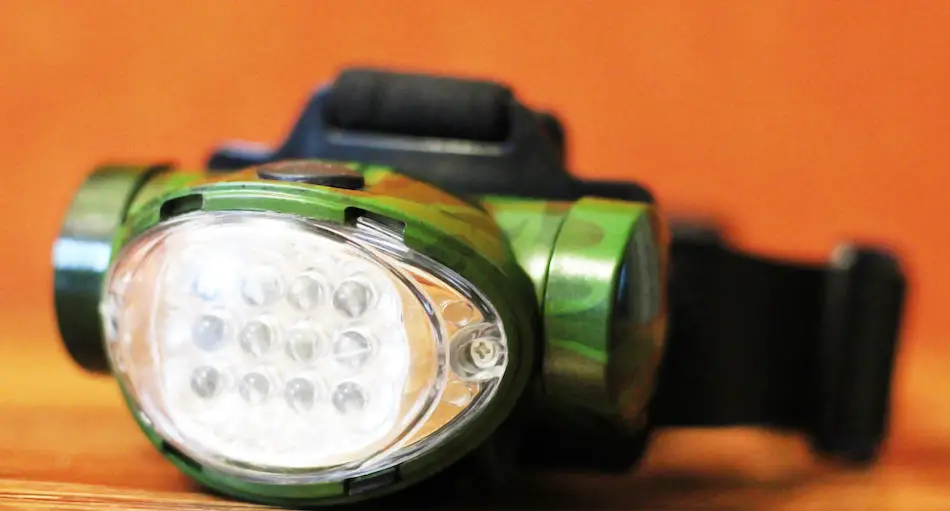
What it is: A small flashlight that attaches to your head via a strap, allowing you to keep both hands free
Why you need it: To allow you to see before the sun comes up/once it goes down without having to tie up a hand
Mountaineering tips often starts before sunrise, and if anything goes wrong, there’s a chance that you’ll be out past sundown. In these situations, having a high-powered headlamp on you is essential to allow you to see the terrain that you’re travelling on (and, therefore, to be able to travel on it safely).
A few years ago, my friend and I both forgot our headlamps when backpacking in the Grand Canyon, and we had to hike up 4,000 feet of elevation in the dark. It was a struggle, and we were on a well-defined trail; I don’t want to think about how difficult it would have been on a technical mountaineering route.
Headlamps are also incredibly lightweight and packable, so there’s no reason to not bring one. Even if you’re not starting in the dark, it’s good to have one as a backup (if something goes wrong, you may well find yourself stuck out after dark).
The Black Diamond Storm is designed specifically for this purpose, and it will serve you well.
Food and Water

What it is: Food and water
Why you need it: To keep your body strong on the trail
Having enough calories and hydration on a mountaineering route can be the difference between an enjoyable trip and a miserable slog. In fact, it’s always best to overpack slightly, just in case something goes wrong and you need to stay out longer than expected.
Everyone’s food preferences vary, but I have some general guidelines:
- You want high-density carbs for energy. Clif Bars are the cream of the crop for this purpose
- Clif Blocs, designed for ultra-runners, are a great source of calories an energy on the go
- Try to favour foods that you can eat while on the go (e.g. granola bars, nuts, etc)
- For water, you need to balance weight with hydration. I would say the max you should bring on any alpine route is 3 litres, although I would try to keep it between 1 and 2 for most routes
Emergency Beacon
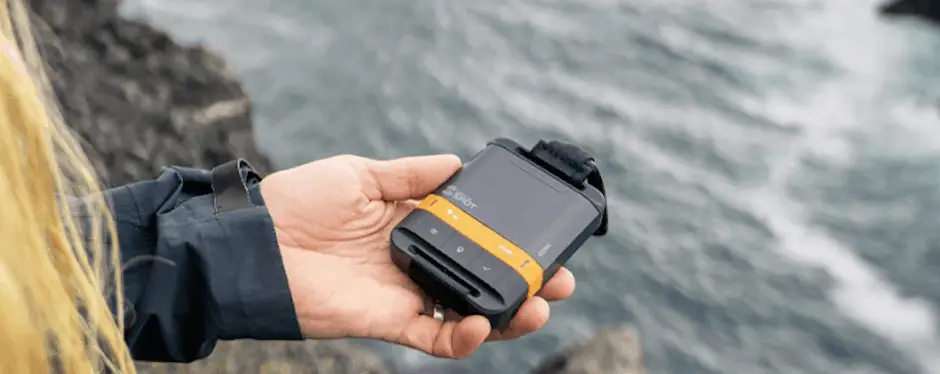
What it is: A device that allows you to send messages and you GPS coordinates via email or cellphone, even when you’re out of service
Why you need one: These devices can literally save your life if someone gets injured or if something goes wrong.
As someone who recently got stranded on the side of a mountain and had to be helicopter rescued out, I can attest first-hand to the importance of an emergency beacon.
These devices use satellites to send messages from anywhere on the globe, either to a pre-established contact (like your significant other) or to emergency services. Since many mountaineering routes will take you out of cell service, these can often be the only way to contact the outside world if something goes wrong.
I personally use the SPOT Gen 3, and it’s served me well. However, I know many people prefer the Garmin InReach, although it does cost about twice as much.
Pack
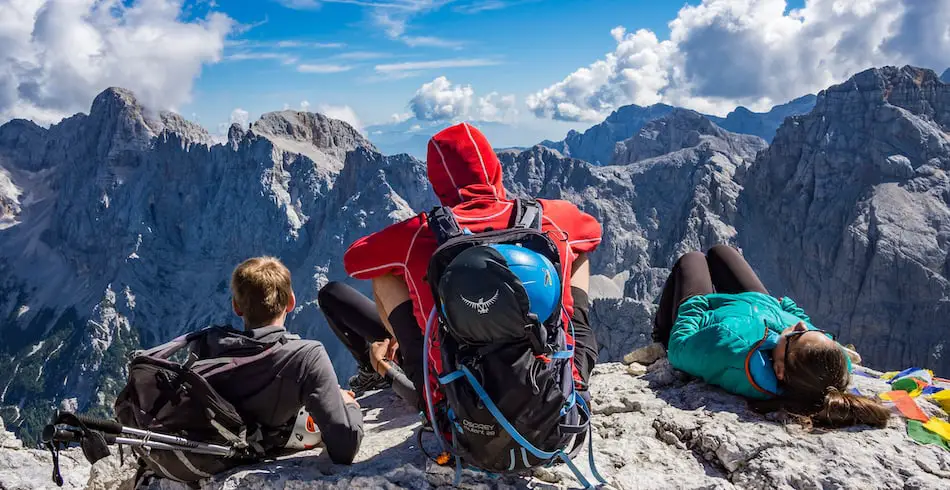
What it is: A backpack to carry all of your gear in
Why you need it: Because you have a lot of stuff, and you need somewhere to put it!
Finally, I’ve never seen someone go alpine climbing without a backpack, so I think it’s safe to assume that you can consider them essential.
Like most of the other things on this list, you probably want a pack that’s alpine-specific. In a pinch, a backpacking or day pack will work, but there are some criteria you want it to fulfill:
- It should be at least 25 litres, although I would look more in the 35-40 range
- Hip belts are a must
- The pack should be made out of durable and preferably water-resistant materials
- It should be designed to be compact so that it doesn’t snag on anything
- Your arms need a full range of motion while wearing it
Essentially, the pack should be comfortable, well-fitting, and now super bulky. It also needs to have space to store all of your gear. Extra features, like straps for your helmet or axe, are a bonus.
Some of the best packs on the market include:
Goal-Specific Gear
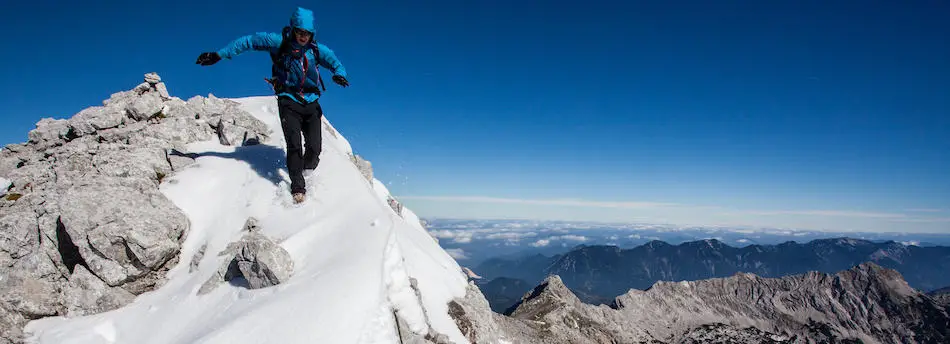
We’ve now covered all of the essential mountaineering gear — stuff that you’ll be bringing with you every time you go into the mountains. However, there are still some pieces of equipment that, while not being necessary for every single mountaineering trip you go on, will still be essential for some of them. These items include:
- An avalanche safety kit
- Skis
- Mountaineering sunglasses
- GPS
- Belay Device
- Stove and Fuel
- Camping Supplies
- Crevasse rescue equipment
Let’s break them down into more detail!
Avalanche Safety Kit
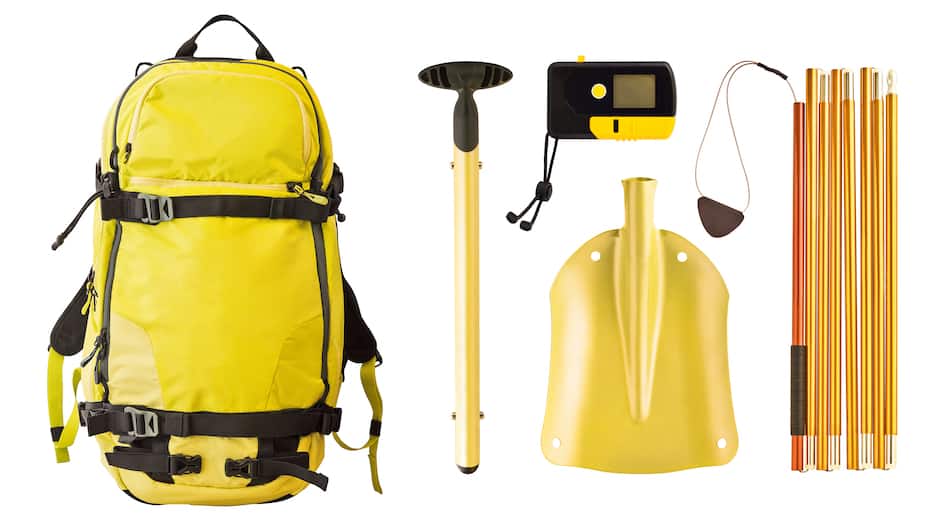
An avalanche kit isn’t commonplace in mountaineering circles, although there is certainly a trend towards making it so. As of now, I would say you can use discretion when deciding when to carry your kit: if you’re going to be in avalanched terrain at all, it’s best to pack it away. If you’re confident that there’s no risk of getting caught, though, you may as well leave it at home to save weight (when in doubt, though, I would still carry it).
Avalanche kits consist of three components:
- Shovel
- Probe
- Beacon
Shovel
A shovel is what you use to dig your partner out if they get buried in an avalanche. Lightweight folding shovels produced by Black Diamond or G3 are the best for this job.
Probe
Probes are telescoping poles that you use to locate your partners before you start shovelling. Again, Black Diamond and G3 produce these.
Beacon
Beacons are short-range transceivers that you wear around your chest that will help you get located from under the snow should you ever get hit by an avalanche (or will help you locate your partner). Make sure to always wear yours underneath your midlayer so that it doesn’t come loose!
BCA, Pieps, and Mammut all make high quality beacons.
Skis

A good pair of backcountry skis can be a lifesaver for crossing long sections of snow, or for descending mountains once you’ve reached the peak. They’re not essential for every mountaineering expedition, but they’re indispensable for some. In fact, they’r so popular that an entire hybrid sport called Ski Mountaineering (ski-mo for short) has been spawned.
Make sure you get a good pair of backcountry skis, and a pair of alpine touring boots. Also, if you’re skiing, it becomes much more important to pack your avalanche safety kit with you.
I personally don’t ski mountaineer, so I can’t offer any good gear recommendations here. However, your local REI should have some experts who can speak to you more about the subject.
Mountaineering Sunglasses

Mountaineering sunglasses are specially designed to keep your eyes safe from the glare of the sun reflecting off of snow. As you can see in the picture above, they’re somewhere between a normal pair of sunglasses and a pair of ski goggles, with visors on the sides to keep you sheltered from the glare.
I debated putting mountaineering glasses in the ‘essential’ column, but they’re not really that important. In a lot of scenarios, a normal pair of sunglasses will work fine; in other scenarios, it might actually make more sense to just bring your ski goggles along.
Where I would recommend mountaineering sunglasses, though, is if you’re doing an extended glacier crossing. Glaciers tend to reflect the sun a lot, and this can actually cause a phenomenon called snow blindness. I don’t know about you, but I prefer to not be blind.
Norther Lights Optics produces a timeless style of glasses. For a more modern (and perhaps more functional) look, go with the Electric California Stacker.
GPS

Good route finding on a mountaineering trip can be the difference between a successful summit and getting lost somewhere in the backcountry. The importance of food navigation was yet another lesson that I learned from my helicopter evacuation.
For this purpose, there’s nothing more important than a GPS. As technology has gotten better, these devices have become smaller, more portable, and far more reliable at triangulating your location and showing you where you need to go.
Once again, I didn’t include this in the ‘essential’ category because you don’t need to bring it on routes you’ve done before, or ones where you’r not worried about getting lost. If you’re concerned about navigation, though, it can make your life a lot easier to just through the GPS in your bag so that you have it.
Garmin is well-known for having the best GPS’s around. If you want something a little more funky you could look at a Suunto watch; to save money, consider downloading the Gaia app.
Belay Device
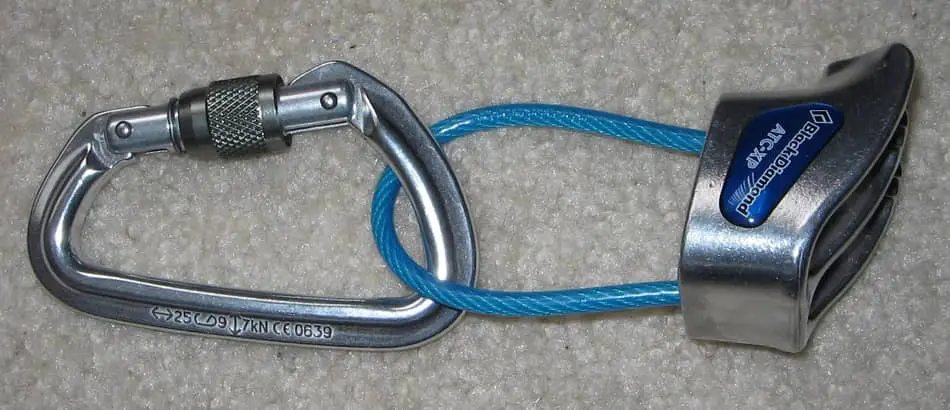
Including a belay device this low on the list feels weird, but I promise you there’s a reason for it. In fact, I have two:
- Not every mountaineering trip will require someone to be belayed
- Even if you need to be belayed, you can always use a munter hitch to do so and leave the belay device at home to save weight.
I’ve recently become a massive fan of munter hitch belays, and I would recommend using them whenever you can. Because of that, a belay device has become less important to me when mountaineering.
Where I would still include it, though, is if you know that you’re going to have to rappel. Rappelling with a munter hitch sucks, and it’s going to kink your rope to hell. To save yourself from that misery, tuck a belay device in your bag.
For mountaineering, the best belay device remains the ATC Guide.
Stove and Fuel
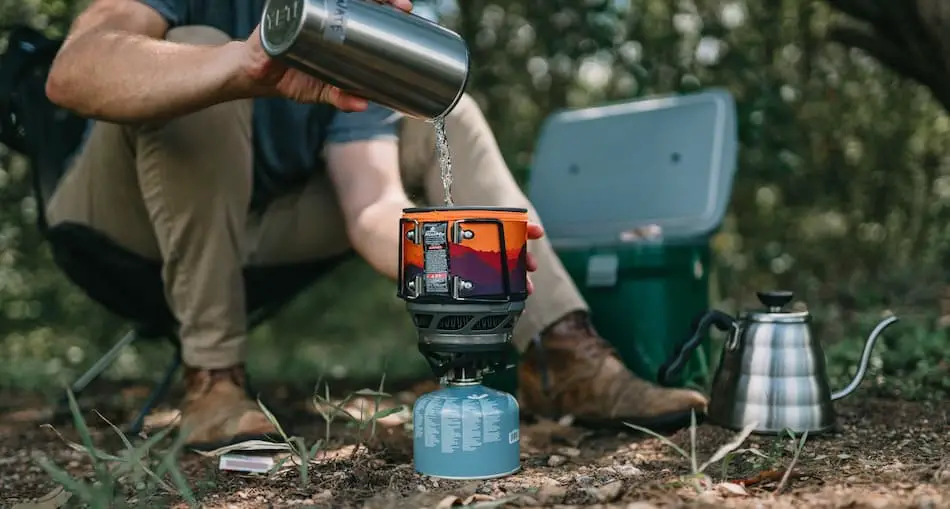
A lightweight stove and fuel can be work bringing along on multi-day trips, or even on longer day trips. There’s nothing quite like a warm meal to bring back your energy and give you the motivation you need for the final push on your route.
However, this also adds a lot of weight to your pack, and cooking a meal takes time. Because of that, I would only recommend doing this on routes where you’re either staying the night or if you’re going to be out for more than twelve hours at a time.
Jetboil stoves are the best mixture of lightweight and efficiency.
Tent/Camping Supplies

Sometimes, mountaineering expeditions can take more than a day. The length of these trips can range from single-night bivouacs to multi-week camping trips as you attempt to take on a peak siege style.
Because of that, the specific gear that you want is going to vary based on your length of stay and what conditions you’ll be in. However, I do have some recommendations:
- A four seasons tent to keep you sheltered from the elements, including snow and ice
- A good down sleeping bag. Nothing else compares to down in terms of warmth-to-weight ratio
- An air mattress with a good R-value. This is only practical if you’re not going to high elevation/cold areas, but a thick air mattress can do wonders in terms of keeping you warm.
MSR, Western Mountaineering, and Thermorest are all leaders in their respective gear categories.
Crevasse Rescue Equipment
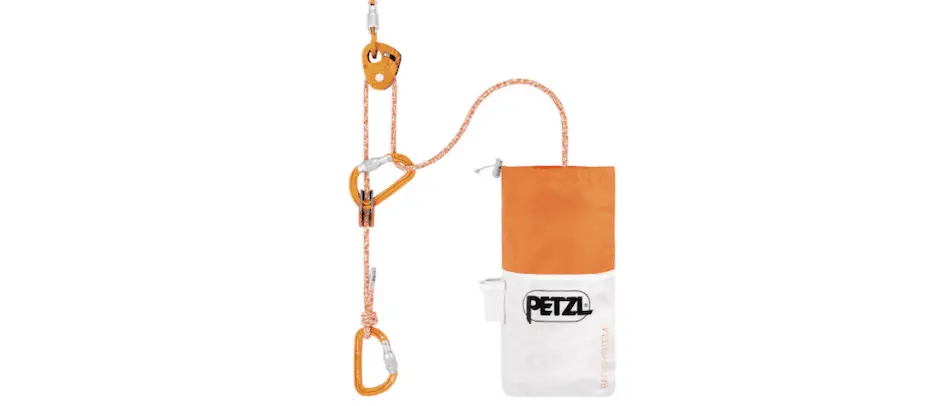
Crevasse rescue equipment is another one of those pieces that isn’t relevant for all mountaineering trips, but is absolutely essential to the ones where it is relevant. If you’re crossing a glacier, you need to make sure that you have some kind of system to rescue your partners if they become trapped. Usually this takes the form of some static cord, a snow anchor, a belay device/ascender, and a few pulley systems to make life easier.
If you don’t want to assemble your own kit, Petzl went ahead and designed one for you.
